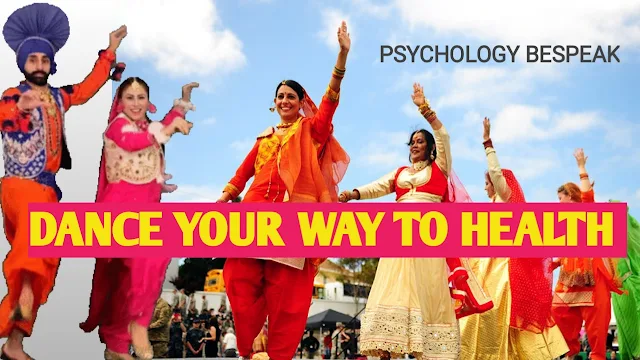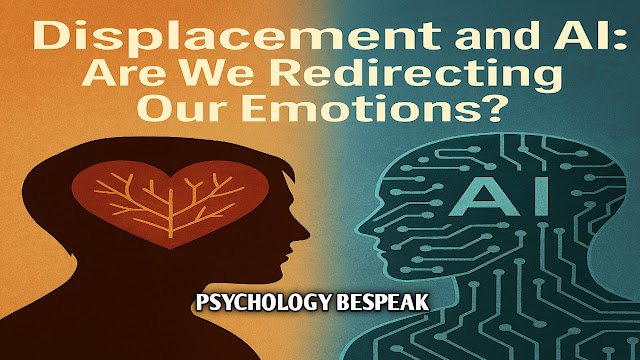DANCE YOUR WAY TO HEALTH ON THIS INTERNATIONAL DANCE DAY
DANCE YOUR WAY TO HEALTH ON THIS INTERNATIONAL DANCE DAY
"While I dance I cannot judge, I cannot hate, I cannot
separate myself from life. I can only be joyful and whole. This is why I
dance." - Hans Bos
Stunning and well said by Hans Bos, it is actually the essence of
Dance. Dance actually make one forget about all the worldly worries and tension
and is truly cathartic. So on this International Dance Day lets learn more
about it and how it affects ones well being.
History
International Dance Day was created in 1982 by the Dance
Committee of the International Theatre Institute (ITI), UNESCO's main partner for performing arts. It
was first celebrated on April 29, 1982 to mark the birth anniversary of Jean-Georges Noverre (1727-1810), the creator of modern ballet.
Since then, International Dance Day is being observed annually to celebrate the
art form.
Every year, since its creation in 1982, an outstanding dance
personality is selected to write a message for International Dance Day. The day
strives to encourage participation and education in dance through events and
festivals held on the date all over the world. UNESCO formally recognizes ITI
to be the creators and organizers of the event.
The day aims to raise awareness about the benefits of dance and
bring people together through it.
Significance of Dance
Shaking a leg to your favourite music is not only pleasurable but
can have a number of health benefits. Dance can serve as a form of workout and
help you get fit and in good health. Dancing regularly may also improve your
memory and help cleanse away stress and anxiety and fight symptoms of
depression.
Dance can be a powerful tool to express yourself or just a way to
enjoy. It can also serve as a physical exercise or therapy for some people.
International Dance Day highlights these qualities of dance and encourages
people to celebrate it.
The day aims to raise awareness about the benefits of dance.
So what actually is Dance?
Dance is a type of art that generally involves movement of the
body, usually rhythmic and to music, performed in many different cultures and
used as a form of expression, social interaction and exercise or presented in a
spiritual or performance setting.
Dance is as a form of nonverbal communication between humans, and
is also performed by other animals like bee dance. Gymnastics, figure skating
and synchronized swimming are sports that incorporate dance, while martial arts
kata are often compared to dances.
What is the full name of DANCE?
The Full
Form of DANCE
is Discipline
Attitude
New
Confidence
Expression.
When did Dance originate in India?
In Hindu mythology, dance is believed to have been conceived
by Brahma. Brahma inspired the sage Bharata Muni to write the Natya Shastra, a treatise on performing arts, from which a codified
practice of dance and drama emerged. He used pathya (words) from the Rigveda, abhinaya (gestures)
from the Yajurveda, geet (music) from
the Samaveda and rasa (emotions)
from the Atharvaveda to form the Natyaveda (body of knowledge about dance).
The best-known of Hindu Deities-Shiva, Kali and Krishna-are typically represented dancing. Shiva's cosmic dance, tandava, Kali's dance of creation and destruction and Krishna's dance with the gopikas (cow-herd girls)-Rasa
Lila-are popular motifs in Hindu mythology.
In ancient India, there were no dedicated auditorium halls or
theaters, and dance was usually a functional activity dedicated to worship,
entertainment or leisure. Dancers usually performed in temples, on festive
occasions and seasonal harvests. Dance was performed on a regular basis before
deities as a form of worship. Even in modern India, deities are invoked through
religious folk dance forms from ancient times. Classical dance forms such
as Bharata Natyam use mudras or hand gestures also to retell
episodes of mythological tales such as the slaying of Kaliya by Krishna.
Gradually dancers, particularly from South India, moved from
temples to houses of royal families where they performed exclusively for
royalty.
India offers a number of classical Indian dance forms, each of
which can be traced to different parts of the country. Classical and folk dance
forms also emerged from Indian traditions, epics and mythology. There are many
Indian folk dances such as Bhangra, Bihu, Ghumura Dance, Sambalpuri, Chhau and Garba and special dances observed in regional
festivals such as Lohri
and Navratri.
Who is considered to be Lord of Dance?
Nataraja (also known as Nataraj) is the dancing form of Shiva according to Hindu mythology. He's known as the King of Dance or Lord of Dance because when he's in this form he does his
cosmic dance to destroy the universe to prepare Brahma to create the universe
anew.
Who are the Best dancers of all time?
Determining the “best” dancers in the world is subjective, as
dance is a diverse and evolving art form with many styles. However, certain
individuals have left a permanent impression on the global dance community.
Dancers, such as Mikhail Baryshnikov, often considered one of the greatest
ballet dancers, energized the stage with unmatched grace and skill. Martha
Graham revolutionized contemporary dance with her innovative techniques.
Michael Jackson, a pop icon, showcased unparalleled creativity and precision in
his performances. Such dancers have not only mastered various dance genres but
have also influenced and inspired generations of artists.
Legendary Dancers across eras
1. Michael Jackson
2. Mikhail Baryshnikov
3. Madonna
4. Shakira
5. Michael Flatley
6. Joaquin Cortez
7. Martha Graham
8. Misty Copeland
9. Prabhu Deva
10. Rudolf Nuyerev
So now what are the Mental Benefits of Dance?
According to Smitha Bhandari, (2024), Beyond just movements and music, dancing offers many benefits for
mental health and brain function. Dancing offers plenty of benefits for your
emotions, intelligence, and relationships. Learning and practicing dance can:
1. Improve self-esteem. The amount that you respect and value yourself is your
self-esteem. Showing yourself that you can learn and master new moves and
skills through dance can improve your self-esteem and confidence.
2. Help you meet new people. Social interaction between groups of people is important to your
mental well-being. Talking and spending time with others improves your mood. It
also makes you feel like you belong and eases loneliness.
3. Improve your mood and attitude. Dancing can improve your mood while you learn, move, and
perform. In fact, many people take dance classes because they put them in a
good mood.
4. Ease depression and anxiety. Dance is an effective type of exercise that raises your heart
rate and works your muscles. Exercise can help with symptoms of depression and
anxiety by releasing certain chemicals in your brain. It also provides a way to
escape repetitive negative thoughts and worries. These are thoughts that run
through your mind over and over.
5. Protect your memory. As we age, it gets harder to remember names, places, and other
details. Learning new things, like different moves and styles of dance,
sharpens your brain’s ability to remember these kinds of
details. This can help prevent dementia.
The mental advantages of dancing depend on the type of dance you
learn. Styles like ballroom dancing require a large degree of improvisation.
These improve your decision-making skills more than completely memorized
movements and routines. On the other hand, interpretive modern dance styles
offer more benefits for creativity.
In the end I would like to quote - "Life is short and there will always be
dirty dishes, so let's dance." - James Howe
References:
· Nataraja the King of Dance: Paperback – Import,
25 July 2015
· WebMD Editorial Contributors Medically Reviewed
by Smitha Bhandari, MD on February 25, 2024





Comments
Post a Comment